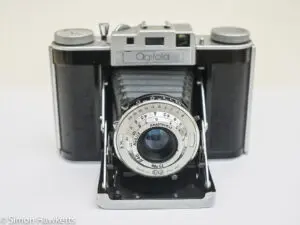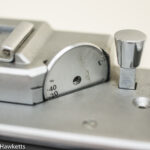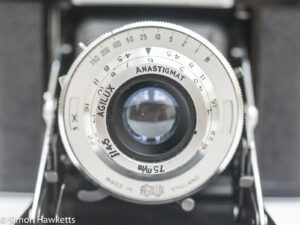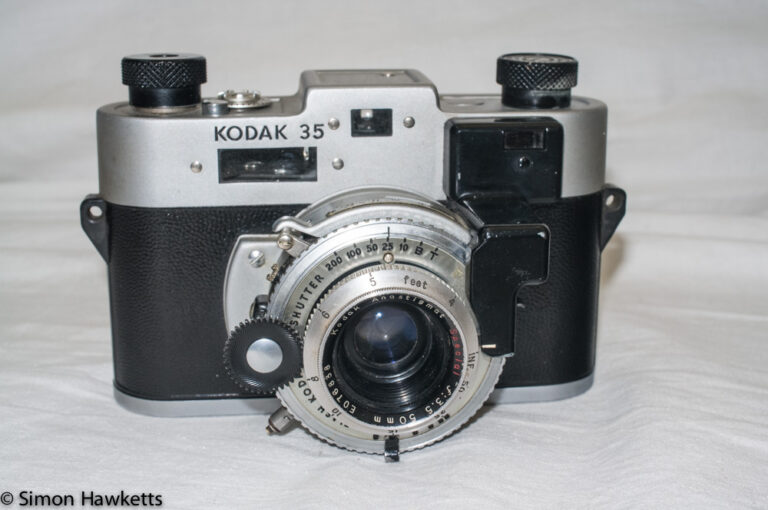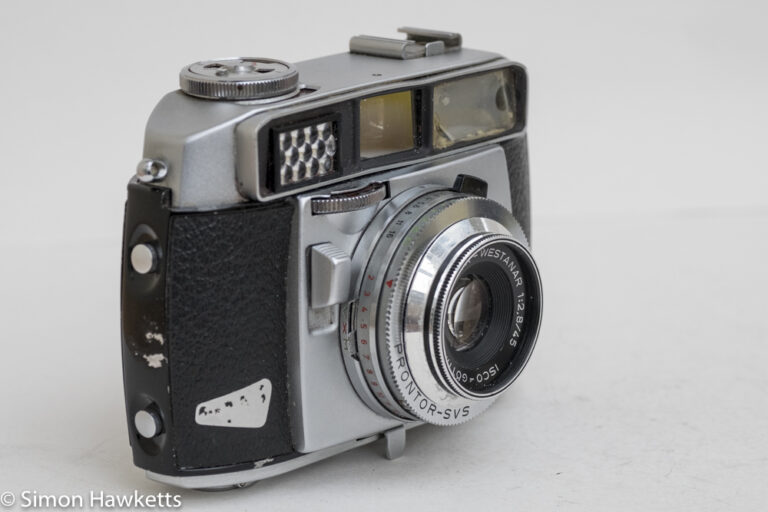The Impressive British made Agilux Agifold 120 film camera
This Agilux Agifold camera is unique in my collection by being completely and wholly made in the UK. I believe every other vintage camera I own has all, or at least some parts (the shutter normally) made in Japan or Germany, but every part of the Agilux was made in a factory in Croydon in about 1954.
My Agifold Agilux Camera
I bought my camera with a couple of known faults.
The rangefinder view was apparently quite dull and difficult to see in anything other than bright light, and the extinction light meter was completely dark.
The rangefinder fault didn’t really concern me because virtually every rangefinder on a camera this old suffers from the same issue, so I expected no more. The extinction meter problem also didn’t worry me too much, because I assumed that it would be something relatively easy to fix, and anyway it isn’t a very important part of the camera, since it’s easy enough to use Sunny 16 to guess exposure.
Since I’ve received the camera, I’ve confirmed that the rangefinder is indeed no worse than any other rangefinder camera I own. It is possible the brightness may improve with a clean and I might attempt that one day, but it’s perfectly usable in daylight and that is all I will use the camera for.
The extinction meter is also as described – completely dark. Again, I may look at fixing this, but it’s not an important feature.
Other than the faults I knew about, the camera seems to be in fine shape. The shutter works at all speeds, although I have noticed the slower ones sometimes seem to be a bit inaccurate. This may just improve with use, but realistically I will probably only shoot it above about 1/100, so I can hand hold.
The aperture is nice and smooth and has a large number of blades, so I would guess will lead to some swirly bokeh.
The shutter release mechanism is solid and seems to work well, although the shutter cocking mechanism is really awkward to use – this isn’t a fault with this particular camera, it just seems to be placed in a really difficult position to move.
The other control which seems really stiff to adjust is the focus, that may free up with use, but in my experience it’s probably the old grease which really needs to be removed and replaced with a modern synthetic grease. The other mechanical controls are the lens release button and the rangefinder adjustment wheel, and these also seem fine.
The one part of a folding camera which always give concern are the bellows, which are one of the first parts to show signs of age, but I’ve examined the bellows on this camera with a strong light and as far as I can see they are light tight and in good condition.
Pictures of the Agilux Agifold camera
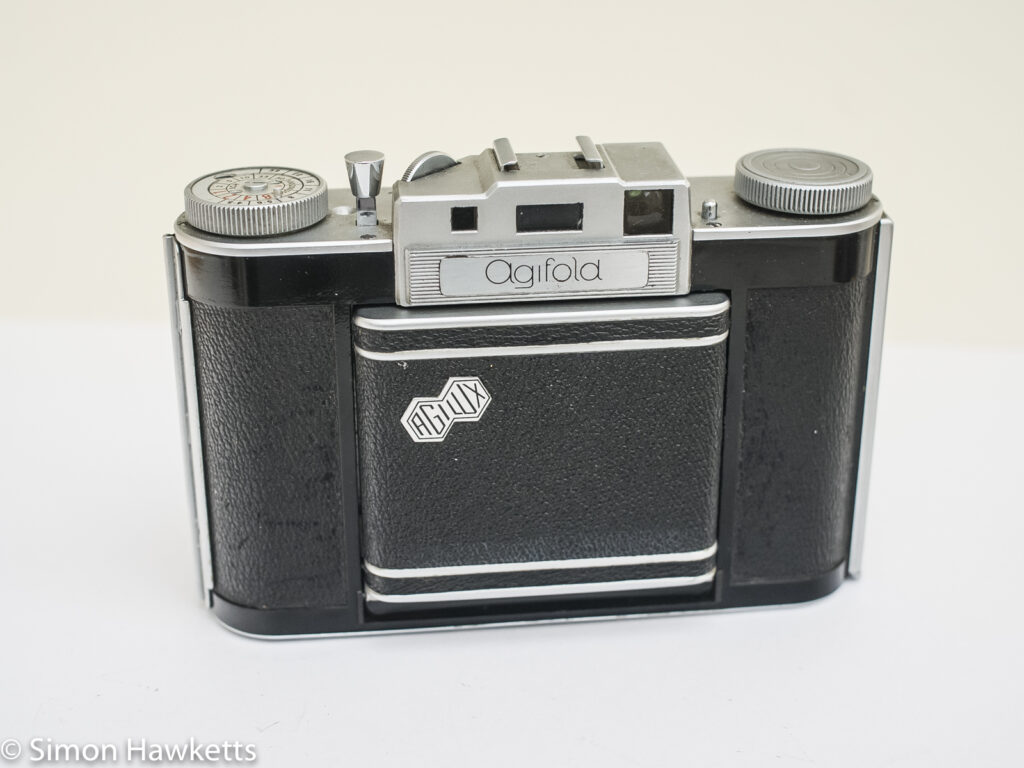
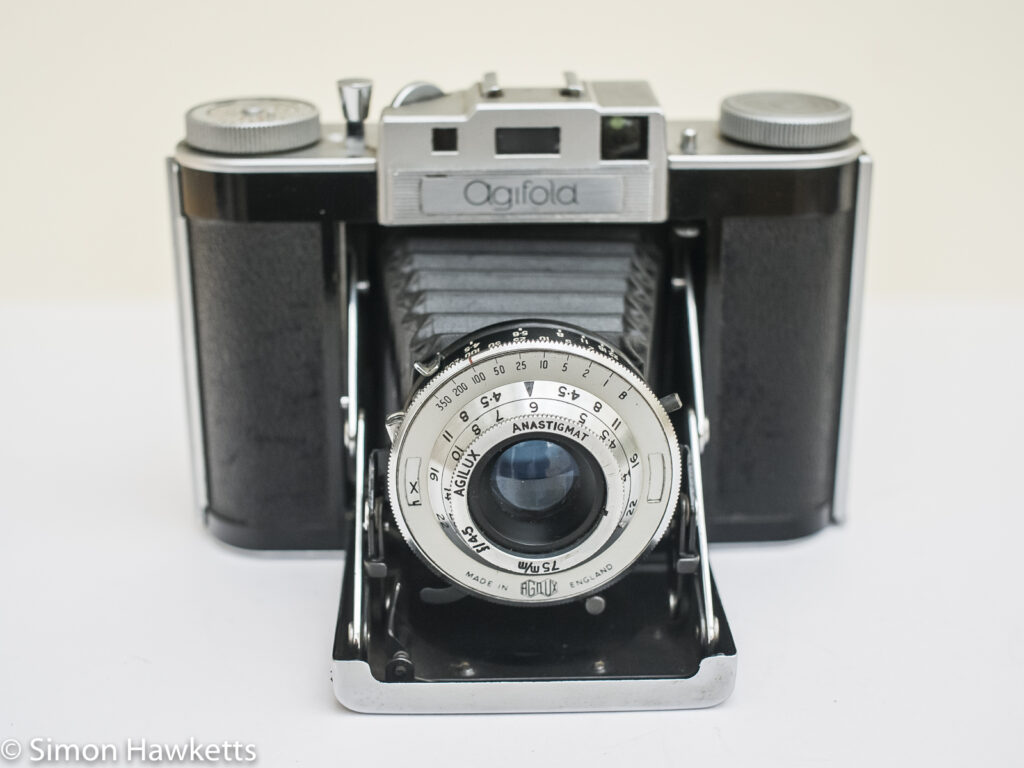
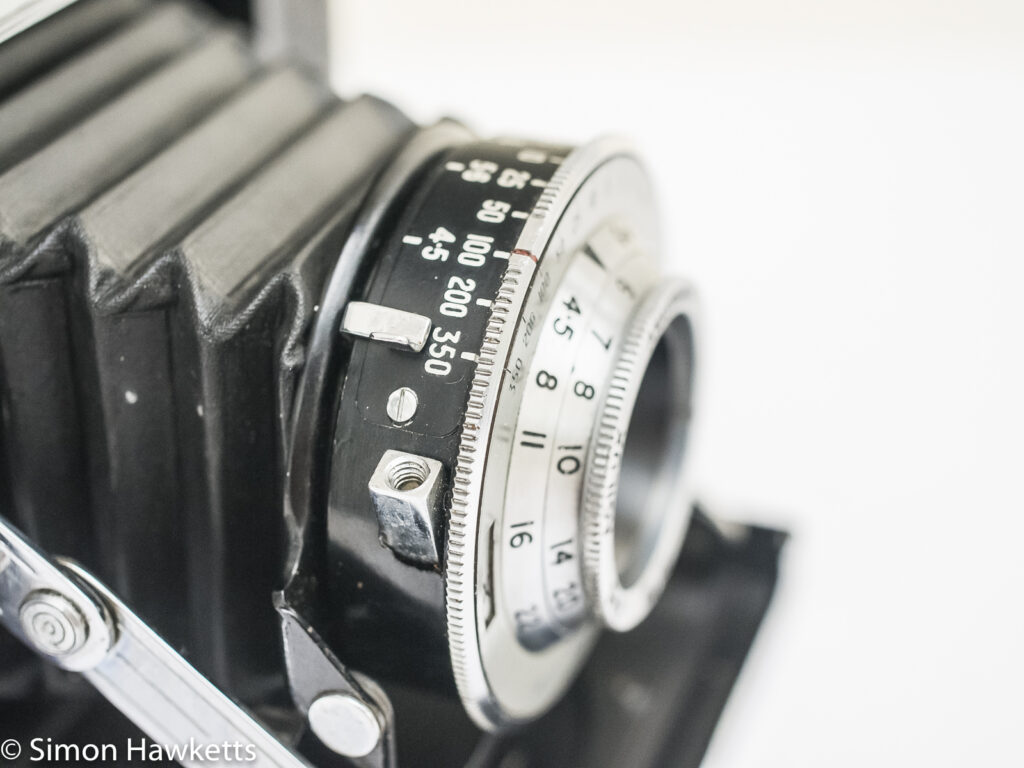
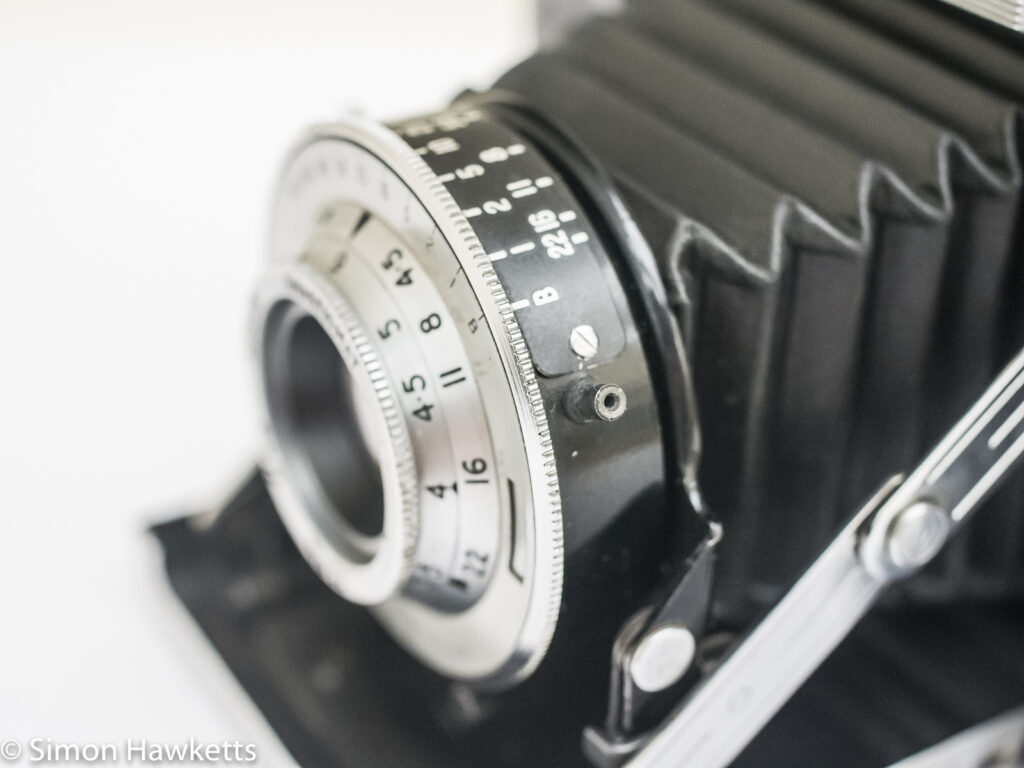
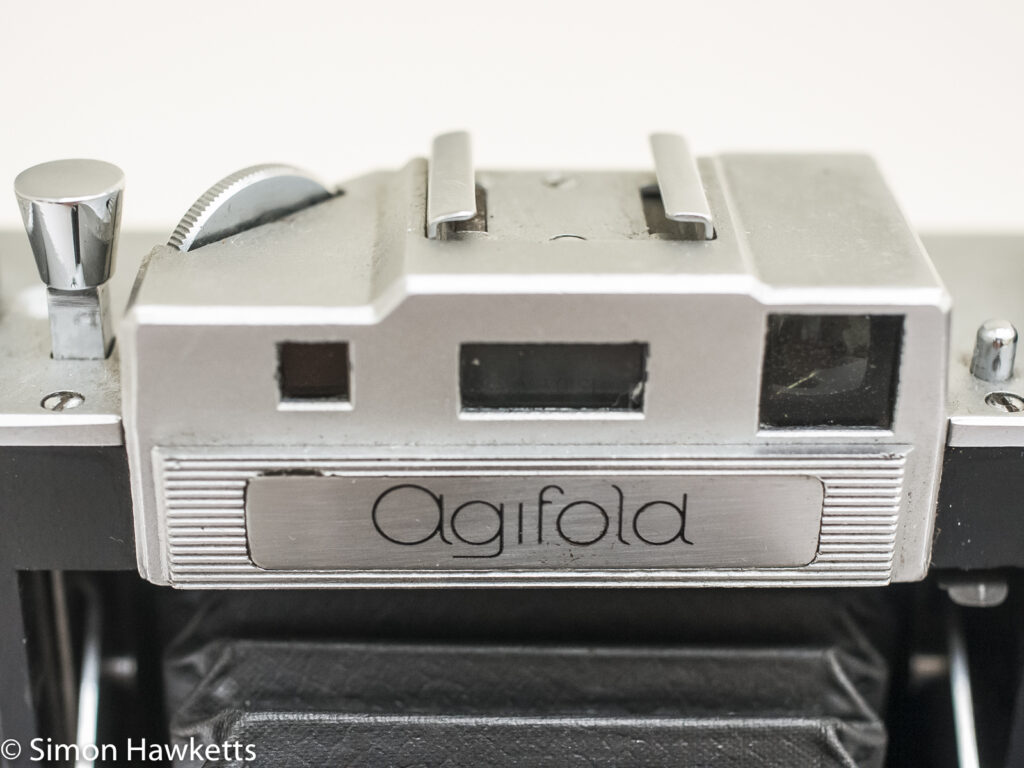
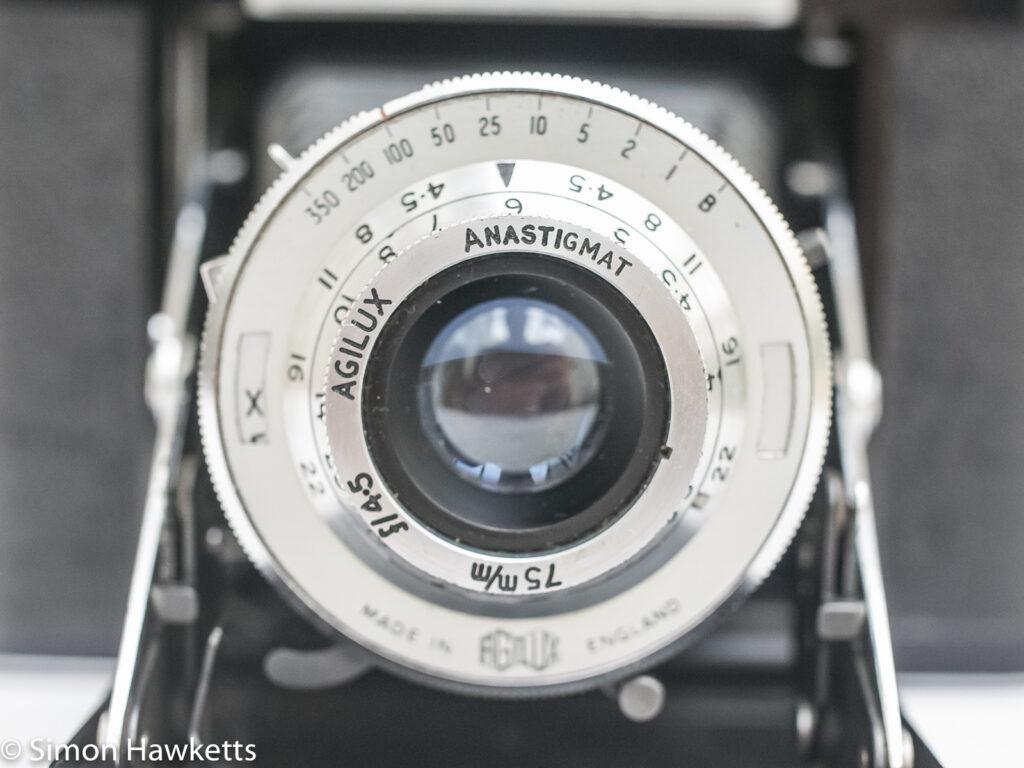
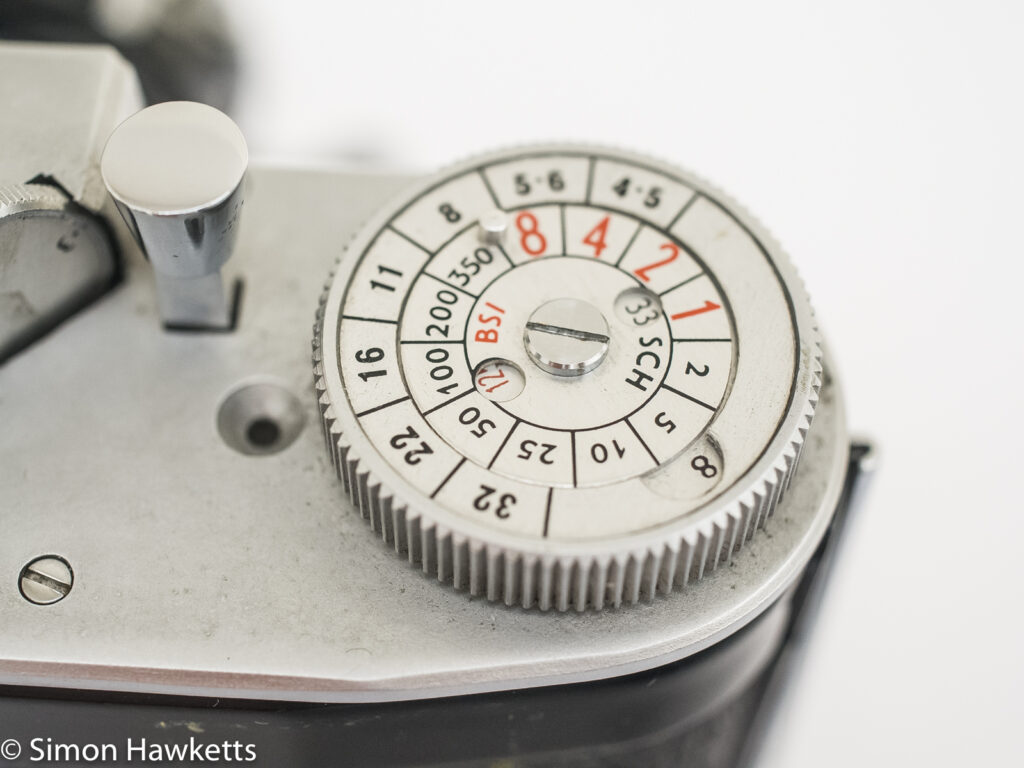
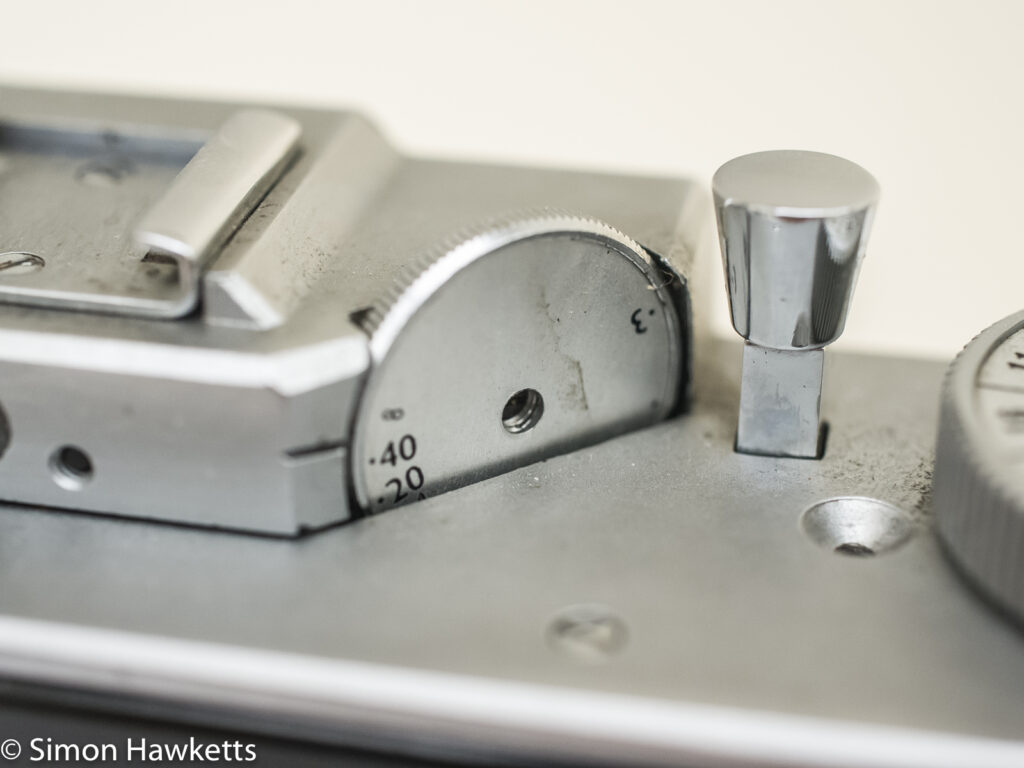
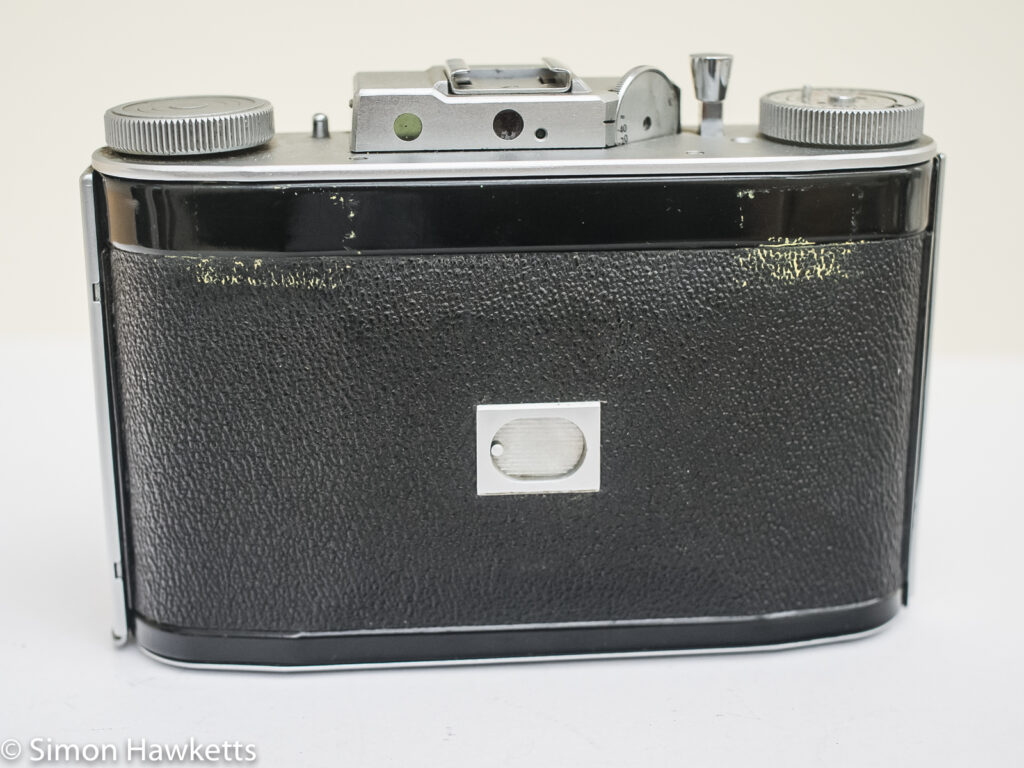
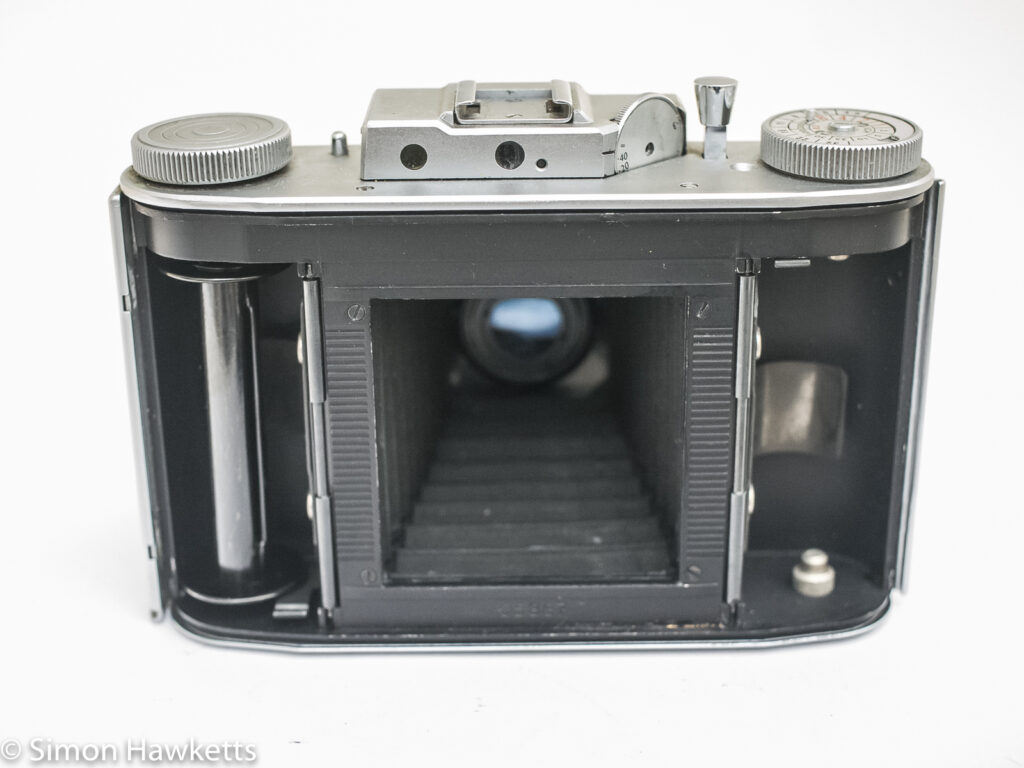

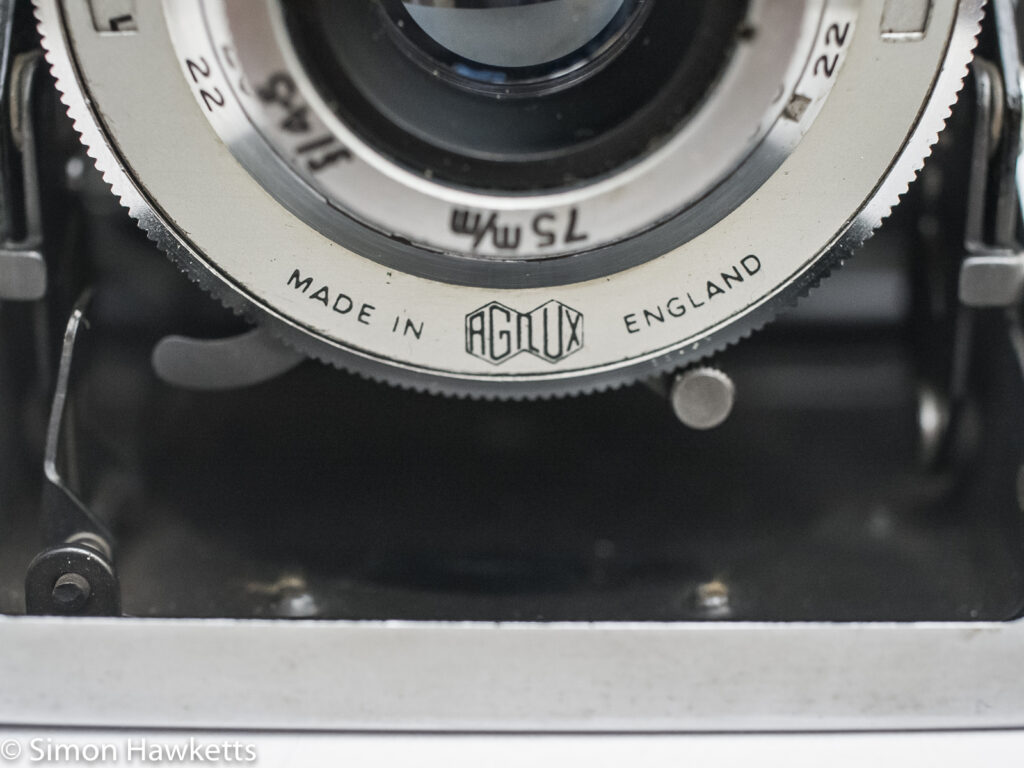
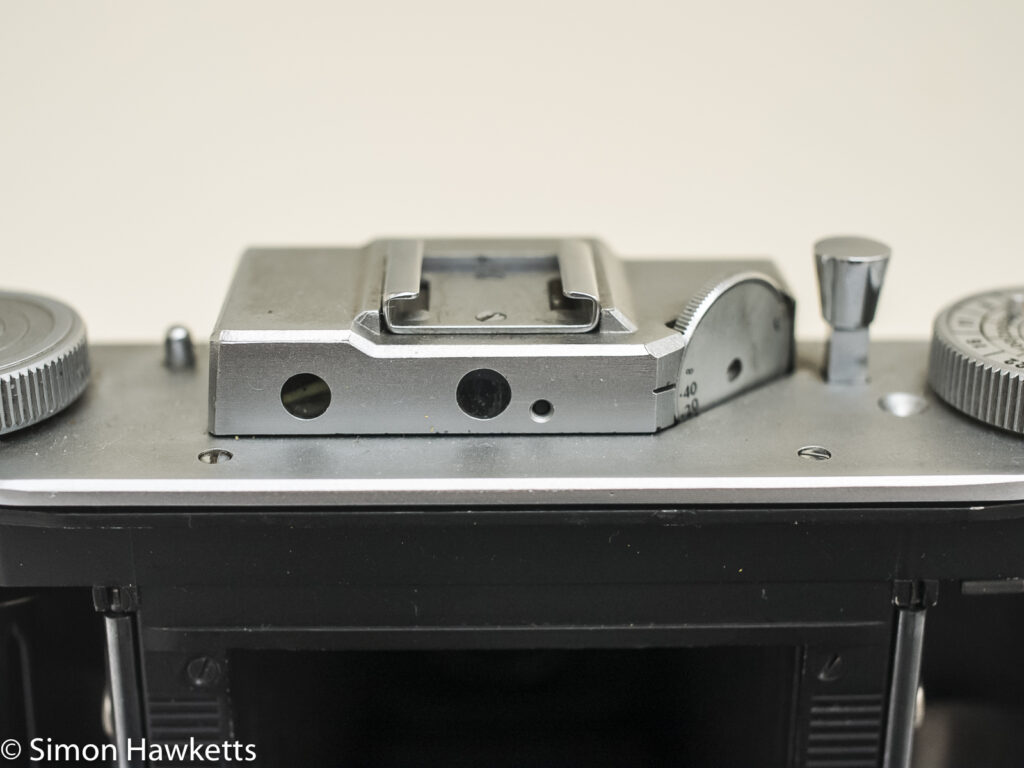
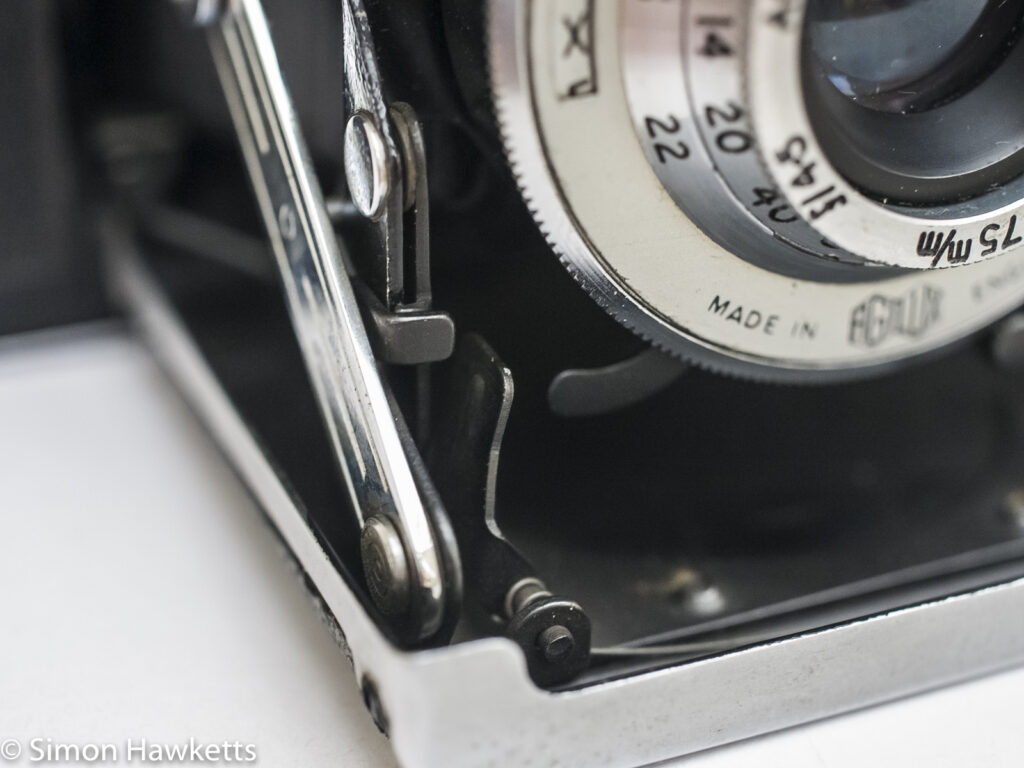
Agilux Agifold description.
The Agilux Agifold is a 120 film folding camera which takes 12 pictures on a roll, each approximately 6 cm x 6 cm.
It was quite a sophisticated, high spec camera for its day, featuring an uncoupled rangefinder to measure the distance to the subject, and an extinction light meter to measure the light in order to set the exposure. The shutter has a good range of speeds and the aperture is quite fast at f/4.5.
Admittedly, that doesn’t sound too impressive today, but when this camera was made in about 1954 it was pretty good.
Uncoupled rangefinder.
The camera has a rangefinder focus finding aid, which works in the standard way of superimposing a yellow coloured version of the image over the image you see in the viewfinder.
Once the subject in the images exactly align, the focus distance is found. This camera is slightly different from a classic, more modern rangefinder, because the adjustment of the rangefinder doesn’t directly alter the focus setting on the camera. Instead, the distance needs to be read off the rangefinder wheel and transferred to the lens – hence the name ‘uncoupled’.
Extinction Light meter
I’ve not owned a camera with an extinction light meter before, and as I said above the example in this camera is not working, but the theory is quite simple.
There is a series of numbers with different levels of opacity on a black background. In bright light, all the numbers will be visible, but as the light level drops, some of the numbers will disappear. In order to use the light meter, the photographer looks through the viewfinder and finds the first number in the series which is visible and dials that number into the exposure calculator on the top plate. From this calculator, the exposure can be read and applied to the aperture and shutter dials on the lens.
Shutter & Aperture
The shutter fitted to this camera is, as I said above, a unit made by Agilux and has a pretty good range of speeds from 1/350 to 1 sec and B.
The cocking mechanism is really awkward to get to, and must be set before the speed is set, otherwise there could be damage caused to the speed setting mechanism. The lens has a coating, focuses down to 3ft, which is quite close for a camera of this age, and has an aperture range from f/4.5 to f/22.
At the front of the lens are two display panels which show the type of flash sync the selected shutter speed can be used at. In the photo of the lens above, you can just see the X showing with the camera set to 1/100th. As the shutter selection dial is rotated, the windows on both sides of the lens show a combination of X, S, F and M for Electronic flash or class F, M or S flash bulbs. Whichever of these letters is showing indicates all the different flash sync types available at that shutter speed.
Loading the camera
The loading mechanism is quite interesting. Once the back is removed, there are film carriers which pull up out of the camera, allowing the film to be easily fitted. This seems quite an efficient and easy way of loading the film, and certainly better than a lot of cameras where film has to be rotated and pushed into place as you make sure the backing paper doesn’t unroll. I will soon be trying this out, as I’ve sent for a roll of HP5 to try the camera out with.
Some other features of the camera include a multiple exposure prevention mechanism with an indicator next to the shutter release button which indicates when the release is available.
All in all, this is a nice looking camera which should produce some nice size negatives, and I’m looking forward to giving it a try-out over the next few days.
Agilux Camera Manual
The camera manual is available from the excellent camera manuals site, and I’ve included a link in the list below, but I also have a copy of the info sheet for the Agifold, and I’ve scanned it and included it here.
Agilux Agifold specifications
- Agilux Agifold 120 film folding camera
- Made in England about 1954
- 75 mm Agilux Anastigmat f/4.5 lens
- 12 6×6 cm negatives
- Cable release socket
- Flash sync with indicator to show type of sync available at each speed
- Double exposure prevention
- Uncoupled rangefinder
- Extinction light meter + exposure calculator
- 1/350 sec to 1 sec + B shutter speeds
- f/4.5 to f/22 aperture
- 3ft (1M) to infinity focus range
- Cold Accessory shoe
- Hinge out loading system
- Tripod bush in base
- Manual available on-line here.
Discover more from Everything Vintage
Subscribe to get the latest posts sent to your email.


